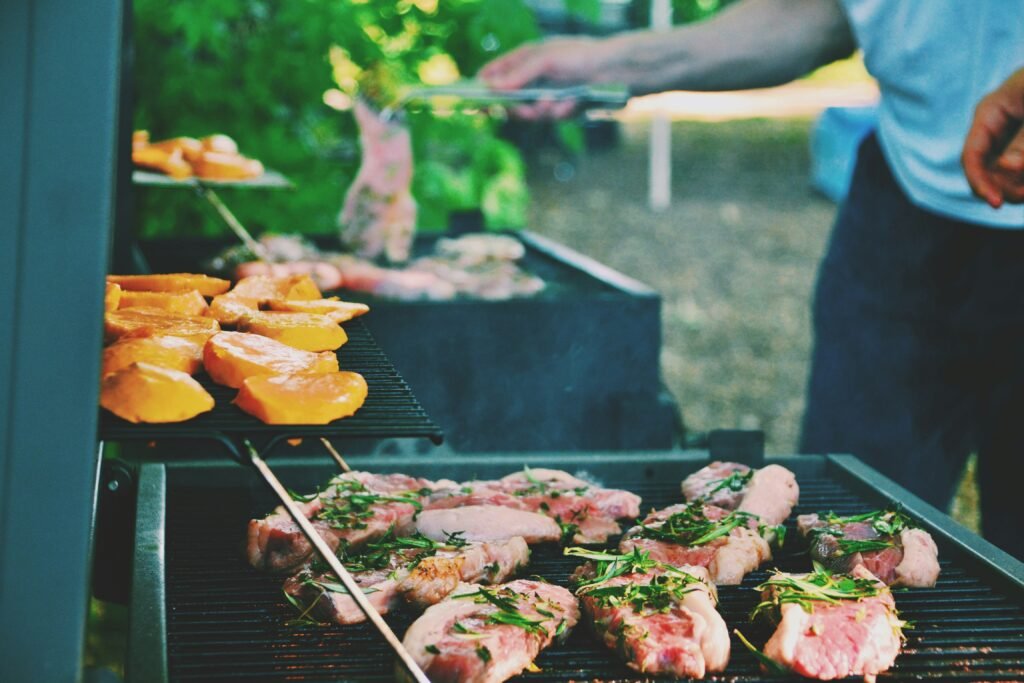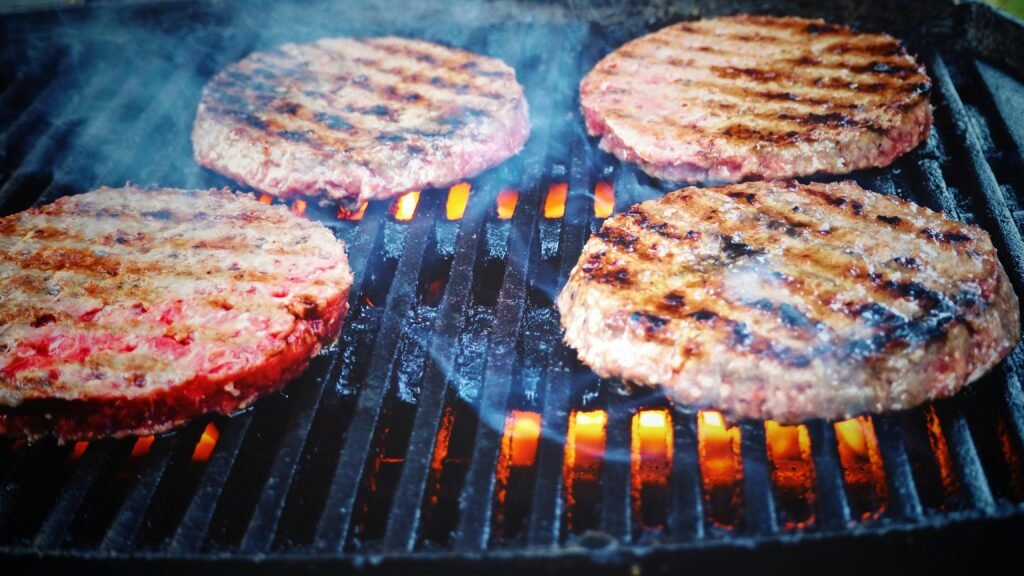Have you ever pondered what makes smoked meat so irresistible? There’s something almost magical about that tender, flavorful cut that sends our taste buds on a whirlwind journey. Perhaps it’s the anticipation, the slow, methodical process, or the aromatic dance of smoke weaving through the fibers of the meat. We find ourselves drawn to the art of smoking meat, longing for smoke-infused perfection right from our own backyards. So, let’s roll up our sleeves and dive into the wondrous world of smoked meats.

This image is property of images.unsplash.com.
The Allure of Smoke: Why it Matters
Smoke is not just an addition; it’s an ingredient in its own right. It transforms the ordinary into the extraordinary.
Understanding the Basics
First things first, let’s discuss why smoke has such a profound effect on meat. As the meat cooks, the smoke infuses its flavor deep into the fibers, creating an intricate tapestry of taste. Our taste buds revel in the mingling of woody notes, such as hickory, mesquite, apple, or cherry, complemented by the inherent flavors of the meat. The variety of woods can impart different aromas and flavors, creating a customized tasting experience every time we fire up the smoker.
The Science Behind Smoking
We should also take a peek behind the curtain and understand the science that makes smoked meats not just about taste but also texture. Smoking meat involves low and slow cooking over indirect heat, allowing tough cuts of meat to become tender as connective tissues break down. The evaporation of moisture as the smoke circulates creates that beloved smoke ring and forms the crust or “bark” on the outside, essential for that texture we all adore. It’s a delicate balance of heat, time, and patience.
Essential Equipment for Smoking Meat
Like any craft, the right tools are vital. Think of us as smoke enthusiasts — not just participants, but artisans in pursuit of flavor and mastery.
Smokers: The Heart of the Process
From traditional charcoal smokers to modern electric versions, each type has its charm and challenges:
-
Offset Smokers: Classic in design, they demand a hands-on approach, keeping us engaged with constant monitoring of temperature and smoke levels.
-
Electric Smokers: Perfect for beginners, offering set-it-and-forget-it convenience, while still delivering remarkable results.
-
Pellet Grills: The hybrid geniuses that combine gas grill convenience with authentic wood-smoke flavor.
-
Kamado Grills: These ceramic, egg-shaped grills retain heat well, offering versatility in smoking and grilling.
Must-have Accessories
Accompanying any good smoker are a few indispensable accessories:
-
Thermometers: Both ambient and meat thermometers ensure precision in cooking, providing peace of mind that each cut is cooked to perfection.
-
Chimney Starter: For those using charcoal, this tool makes lighting coals more efficient and eco-friendly without the need for lighter fluid.
-
Wood Chips and Chunks: Depending on our choice of meat, selecting the right wood type is equally crucial. We should never underestimate the power of applewood or the punch of mesquite.
Choosing the Meat: Cuts to Smoke
Now onto the pièce de résistance: the meat. The choice of meat can significantly influence the smoking process and result.
Beef: More than Just Brisket
While brisket often grabs the spotlight, there are other contenders in the beef category:
-
Short Ribs: Deliciously meaty and rich, their high fat content makes them ideal for absorbing smoke and creating a melt-in-your-mouth experience.
-
Chuck Roast: The sleeper favorite, smoked to create a beefy alternative to pulled pork.
Pork: Classic and Versatile
Pork offers versatility and adopts smoky flavors beautifully:
-
Pork Shoulder (Butt): Perfect for pulled pork, this cut is forgiving, ideal for beginners looking to impress.
-
Spare Ribs: Affordable and flavorful, lending themselves to different rubs and sauces to suit our taste preferences.
Poultry: Quick yet Flavorful
Smoked poultry delivers satisfying results in less time:
-
Whole Chicken: Quick to smoke, adaptable for herbed brines for extra flavor.
-
Turkey Breast: For those seeking a leaner alternative, taking on smoke while maintaining juiciness when done right.
Crafting the Perfect Rub and Marinade
Before we consider smoking anything, the foundation flavor needs to be built — enter the mighty rub and marinade.
Rubs: The Soil For Our Smoking Seed
Rubs are like the seasoning’s younger, sprightlier sibling. They’re a dry mixture of spices and herbs applied to the meat before smoking.
Basic Rub Recipe
Here’s a simple rub recipe to get you started:
| Spice | Amount |
|---|---|
| Paprika | 2 tbsp |
| Brown Sugar | 2 tbsp |
| Salt | 1 tbsp |
| Black Pepper | 1 tbsp |
| Garlic Powder | 1 tsp |
| Onion Powder | 1 tsp |
| Cayenne Pepper | 1 tsp |
Mix these together and apply generously to your chosen meat. The beauty of rubs lies in their adaptability, allowing us to modify quantities and add other favorite spices like cumin or coriander for a personalized touch.
Marinades: The Soaking Symphony
If rubs are the dry element, marinades are their liquid counterparts. They often consist of an acid (such as vinegar or citrus juice), an oil, and various seasonings.
Classic Marinade Recipe
Here’s an example, great for poultry or pork:
| Ingredient | Amount |
|---|---|
| Olive Oil | 1/2 cup |
| White Vinegar | 1/4 cup |
| Lemon Juice | 2 tbsp |
| Soy Sauce | 1/4 cup |
| Brown Sugar | 2 tbsp |
| Garlic (minced) | 4 cloves |
| Rosemary | 1 tsp |
Combine the ingredients and let the meat soak for several hours or overnight for the best outcome.

This image is property of images.unsplash.com.
Techniques for Smoking Meat
Finally, let’s land on some techniques to help us achieve smoke perfection.
The Process of Smoking
-
Prepping the Smoker: We begin by cleaning our smoker of residual ashes or charred bits. Then, we fill the water pan (if using) and prepare our choice of wood chips or chunks.
-
Setting the Temperature: Maintaining a stable temperature between 225-250°F (107-121°C) is essential for most meats. It truly is an art form finding the balance between hot coals and freshly added chips.
-
Meat Placement: Placing the meat on the smoker’s grate ensures that it’s far from the direct source of heat, allowing the smoke to work its magic.
-
Monitoring and Maintaining: The next few hours call for our patience as the smoke does its work. Monitoring internal meat temperature ensures we achieve our desired doneness.
-
The Resting Phase: After all the work, allowing the meat to rest is crucial. It lets juices redistribute, ensuring every bite is perfectly tender.
Sauces for the Finishing Touch
While the meat is the star, the sauce can elevate the experience from great to fantastic.
Smoky BBQ Sauce Recipe
For those who love the classic taste of BBQ, we offer this tried and true recipe:
| Ingredient | Amount |
|---|---|
| Ketchup | 2 cups |
| Apple Cider Vinegar | 1/2 cup |
| Brown Sugar | 1/3 cup |
| Worcestershire Sauce | 1/4 cup |
| Lemon Juice | 1 tbsp |
| Smoked Paprika | 1 tsp |
| Garlic Powder | 1 tsp |
Combine all ingredients and simmer on low heat for about 20 minutes. Ideal for brushing onto meat during the last half hour of smoking for a delicious gloss.
A Few Final Words on the Smoking Journey
So why do we embark on these smoky endeavors? Maybe it’s the camaraderie as we gather around the smoker, sharing stories and laughter. Perhaps it’s the fulfillment found in mastering a technique that dates back centuries. Whatever the reason, smoking meat is more than just a recipe—it’s an experience, a celebration of flavors, and a tradition we’re proud to call ours.
Whether we are seasoned pros or novices taking our first whiff of applewood smoke, every new piece of meat on the grill promises adventure. It invites us to experiment, indulge, and ultimately, enjoy the fruit of our flavorsome labor. Let us keep the smoke rising, the conversation flowing, and the meat—oh, the meat—irresistibly delicious.



